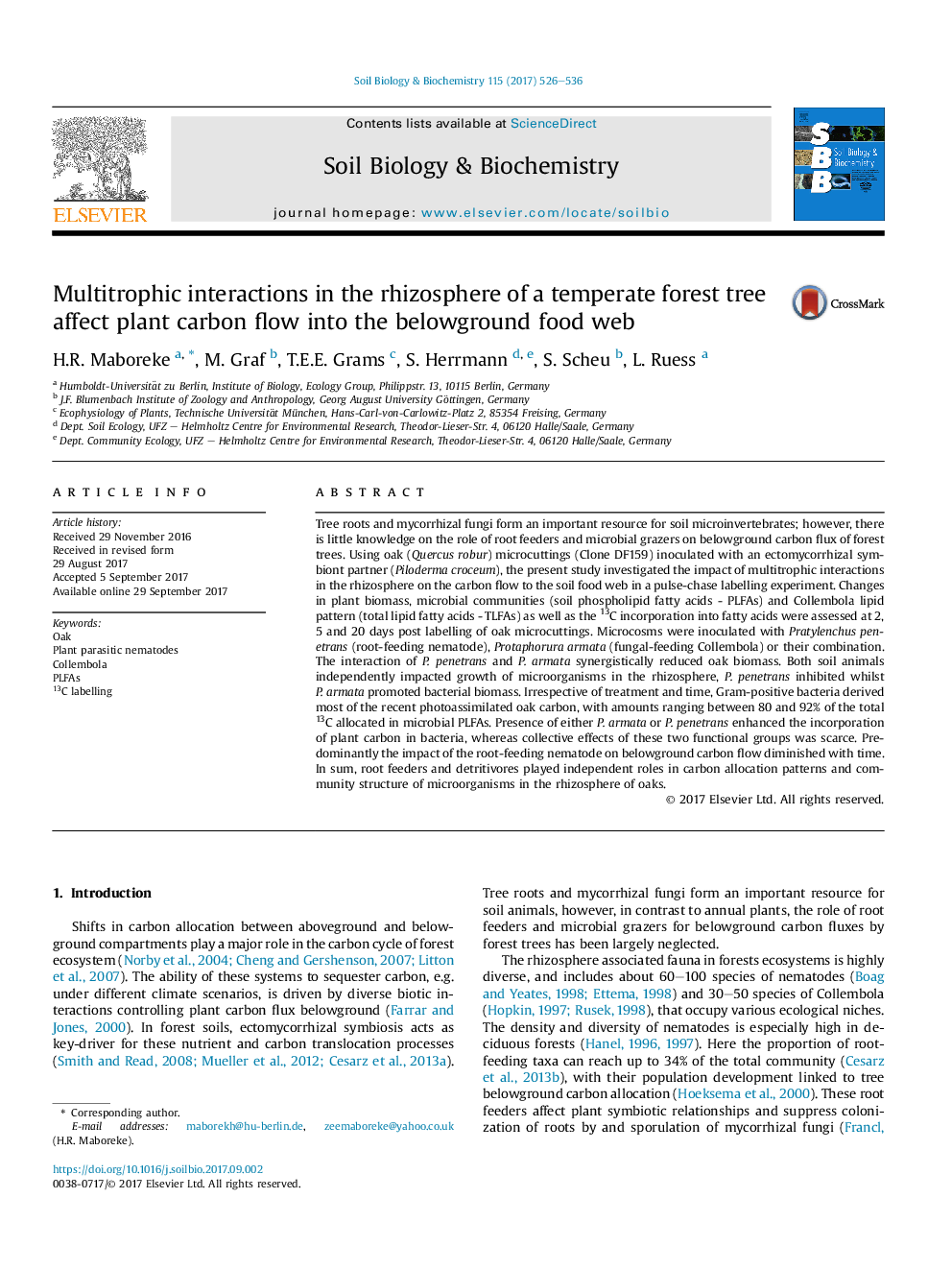| کد مقاله | کد نشریه | سال انتشار | مقاله انگلیسی | نسخه تمام متن |
|---|---|---|---|---|
| 5516274 | 1542569 | 2017 | 11 صفحه PDF | دانلود رایگان |
- The nematode-Collembola interaction was detrimental to the growth of the temperate forest tree oak.
- Rhizosphere multitrophic interaction in oaks were shaped differently by faunal functional groups.
- Root-feeding Pratylenchus penetrans hampered yet fungal-feeding Protaphorura armata promoted rhizosphere bacterial biomass.
- Nematodes and Collembola played independent roles in belowground allocation patterns of plant-derived carbon.
Tree roots and mycorrhizal fungi form an important resource for soil microinvertebrates; however, there is little knowledge on the role of root feeders and microbial grazers on belowground carbon flux of forest trees. Using oak (Quercus robur) microcuttings (Clone DF159) inoculated with an ectomycorrhizal symbiont partner (Piloderma croceum), the present study investigated the impact of multitrophic interactions in the rhizosphere on the carbon flow to the soil food web in a pulse-chase labelling experiment. Changes in plant biomass, microbial communities (soil phospholipid fatty acids - PLFAs) and Collembola lipid pattern (total lipid fatty acids - TLFAs) as well as the 13C incorporation into fatty acids were assessed at 2, 5 and 20 days post labelling of oak microcuttings. Microcosms were inoculated with Pratylenchus penetrans (root-feeding nematode), Protaphorura armata (fungal-feeding Collembola) or their combination. The interaction of P. penetrans and P. armata synergistically reduced oak biomass. Both soil animals independently impacted growth of microorganisms in the rhizosphere, P. penetrans inhibited whilst P. armata promoted bacterial biomass. Irrespective of treatment and time, Gram-positive bacteria derived most of the recent photoassimilated oak carbon, with amounts ranging between 80 and 92% of the total 13C allocated in microbial PLFAs. Presence of either P. armata or P. penetrans enhanced the incorporation of plant carbon in bacteria, whereas collective effects of these two functional groups was scarce. Predominantly the impact of the root-feeding nematode on belowground carbon flow diminished with time. In sum, root feeders and detritivores played independent roles in carbon allocation patterns and community structure of microorganisms in the rhizosphere of oaks.
Journal: Soil Biology and Biochemistry - Volume 115, December 2017, Pages 526-536
